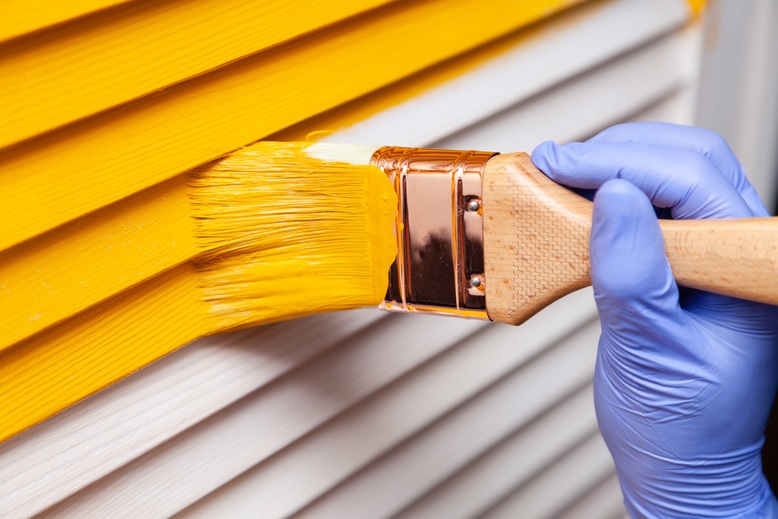Painting is a fantastic way to revitalize and beautify your living space, but did you know that interior and exterior painting are two distinct endeavors? In this comprehensive article, we’ll delve deeper into the essential differences between interior and exterior painting, providing you with valuable insights to help you make informed decisions when it comes to transforming your home.
Interior Painting: A World of Creativity
Color Selection
One of the most exciting aspects of interior painting is the vast range of colors at your disposal. Since interior spaces are shielded from the harsh outdoor elements, you have the freedom to experiment with vibrant, bold, and creative colors that express your personality and style. From tranquil pastels to eye-catching neons, the possibilities are endless. Selecting the right color can dramatically affect the mood and ambiance of a room, so take your time to choose wisely.
Paint Types
When it comes to paint types, Platinum Pro Painting, a reputable name in the industry, often recommends the use of water-based paints, commonly referred to as latex paints, for interior projects. These paints are favored for their low odor, quick drying time, and ease of cleanup, making them the preferred choice for homeowners looking to balance aesthetics and maintenance convenience. Additionally, Platinum Pro Painting emphasizes that water-based paints are eco-friendly, aligning with sustainable practices for your home.
Surface Preparation
Compared to exterior surfaces, interior walls are generally smoother and more even. Consequently, the preparation process is less labor-intensive. A light sanding and patching of minor imperfections are often sufficient to achieve a smooth canvas for your chosen colors. Proper surface preparation ensures that the paint adheres flawlessly, resulting in a professional-looking finish.
Durability
Interior paint is sheltered from the elements, making it less susceptible to wear and tear. As a result, interior paint is expected to maintain its appearance for a more extended period compared to its exterior counterpart. To extend the life of your interior paint, consider using washable and stain-resistant varieties, especially in high-traffic areas.
Exterior Painting: Battling the Elements
Weather Considerations
Exterior painting presents the significant challenge of withstanding various weather conditions. From scorching sun and heavy rain to freezing temperatures and snow, exterior surfaces endure it all. Therefore, the choice of paint becomes pivotal. Opt for paints that have UV resistance to protect against fading from the sun and moisture resistance to prevent cracking and peeling during rainy seasons.
Paint Types
For exterior painting, professionals often recommend oil-based paints or acrylic paints blended with urethane. These paints are renowned for their durability and ability to provide protection against the unforgiving elements of nature. Investing in high-quality exterior paint can save you money in the long run, as it requires less frequent repainting.
Surface Preparation
Preparing exterior surfaces for painting is a more rigorous process. It involves thorough cleaning to remove dirt, debris, and mildew, as well as scraping, sanding, and sometimes even minor repairs. The goal is to create a smooth and robust foundation for the paint to adhere to, ensuring its longevity. Proper surface preparation not only improves paint adhesion but also prevents issues like peeling and blistering.
Color Selection
Exterior color choices are typically more subdued compared to the vibrant spectrum available for interior spaces. The exterior palette often comprises neutral tones and earthy colors to create a harmonious look that complements the surroundings and the architectural style of the house. Remember that the color you choose for your home’s exterior can impact its curb appeal and resale value.
The Significance of Professional Assistance
Regardless of whether you’re embarking on an interior or exterior painting project, seeking professional help is a prudent choice. Painting professionals possess the expertise to select the right type of paint, ensure meticulous surface preparation, and apply the paint in a manner that guarantees enduring and visually appealing results. Their knowledge of the latest painting techniques and trends can also help you achieve a modern and stylish finish.
Conclusion
In conclusion, interior and exterior painting share the common goal of enhancing the appearance of your home, but they are distinct endeavors with significant differences in color selection, paint types, surface preparation, durability, and weather considerations. It’s imperative to grasp these distinctions when planning your home improvement projects. Transforming your living space with a fresh coat of paint can be a rewarding experience. Whether you’re looking to infuse vibrancy into your interiors or protect your home’s exterior from the elements, understanding these key differences will empower you to make informed decisions. When in doubt, don’t hesitate to consult with a professional painter to ensure your vision becomes a reality. Achieving the perfect look for your home involves careful consideration of every aspect, from the type of paint to the color palette. By making well-informed choices, you can transform your living space into a place that reflects your personality and withstands the test of time.

